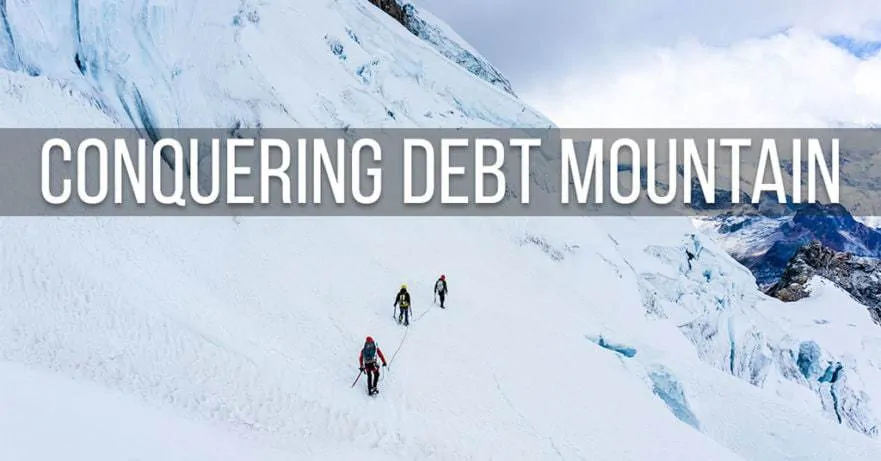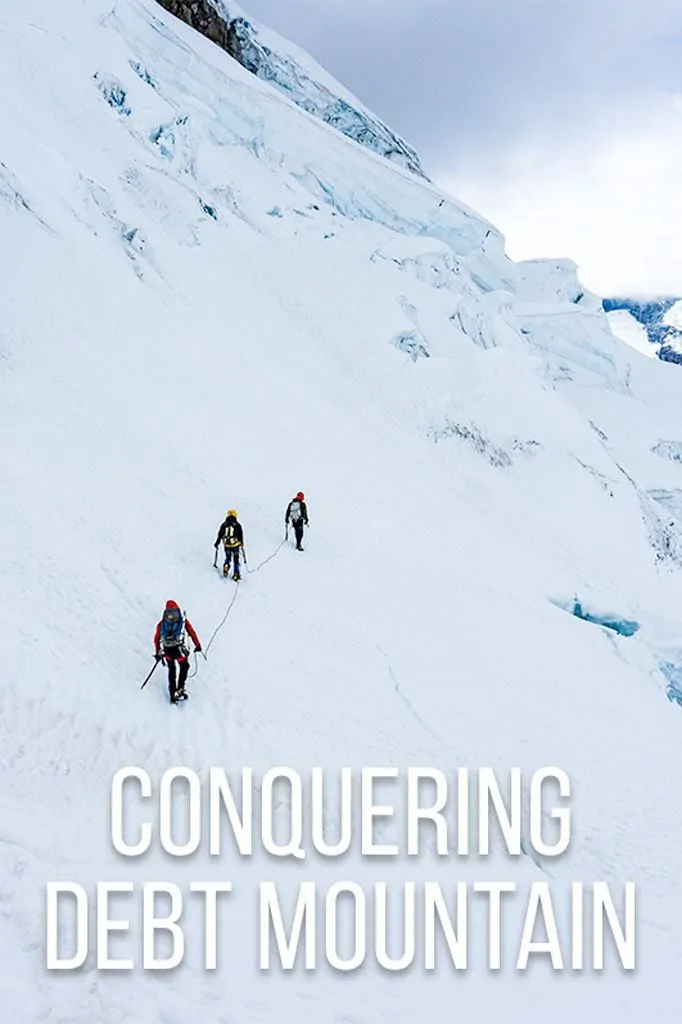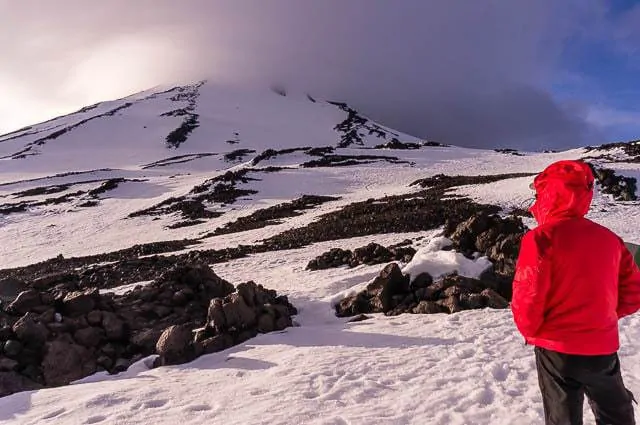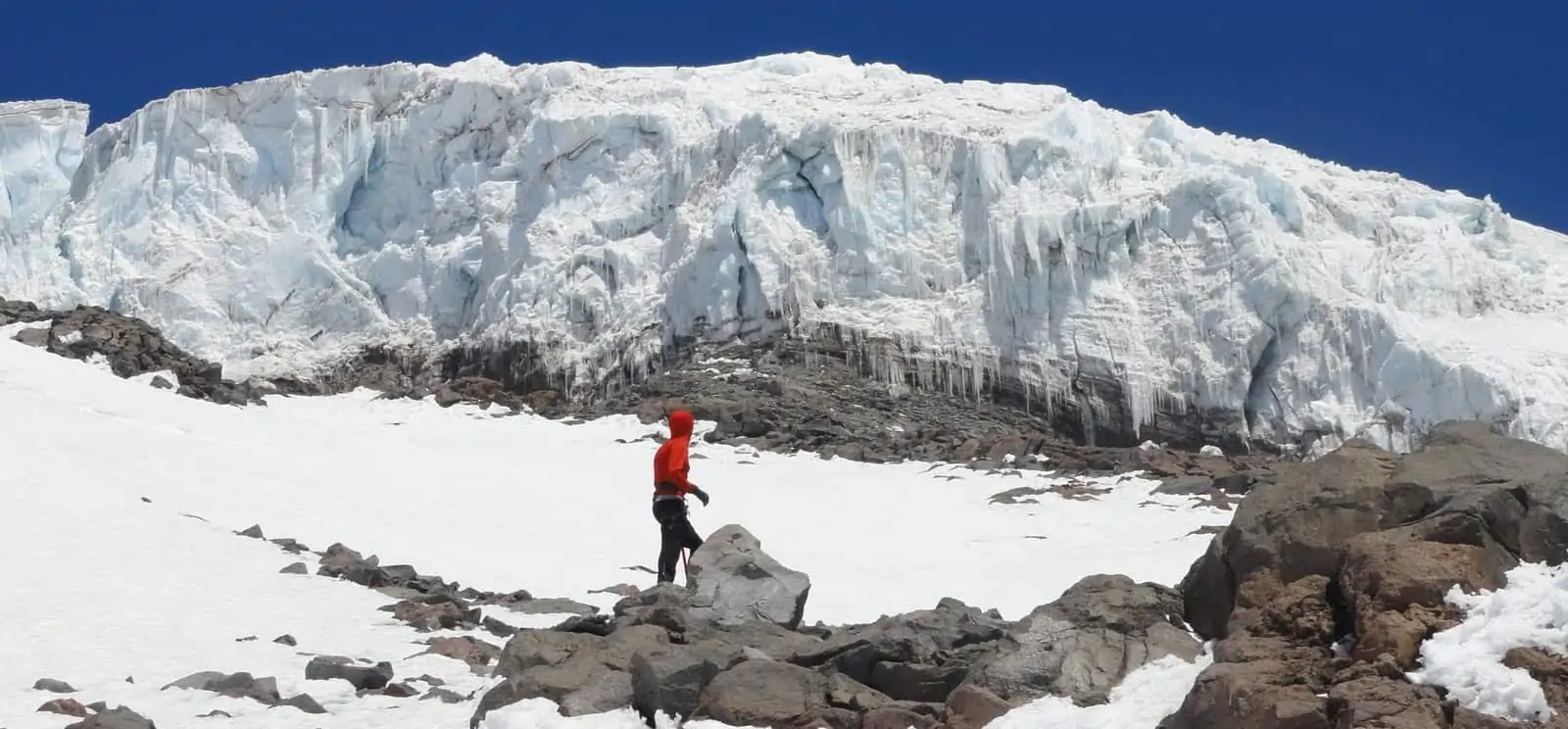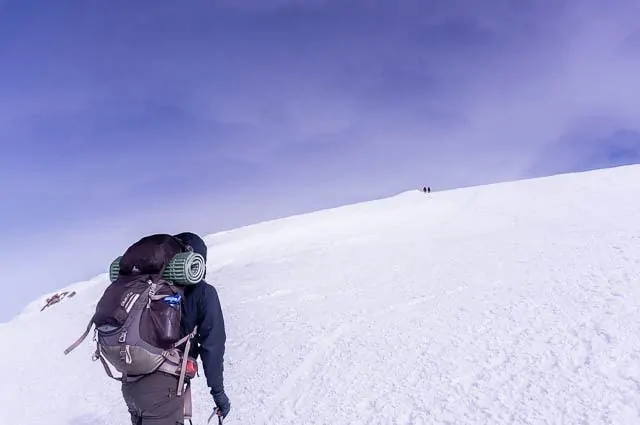A mountain of debt is the most deadly and serious climb that most Americans will face, one that is deadlier than Mount Everest or K2, and one which leaves a trail of destruction in its wake, no matter whether you live beside the Fourteeners in Colorado, or in the flatlands of Florida. Today I’ll be serving as your guide as we head up the icy, treacherous slopes of the dangerous Debt Mountain.
So grab your ice ax and strap on your crampons… This is gonna be a tough climb, but with hard work and dedication, you too can stand on the summit of this lofty peak and feel the freedom that comes from conquering Debt Mountain and the life of possibilities that await.
A Four Letter Word
Do you know what the worst four-letter word out there is? Debt. Yeah, that soul-sucking, life-crushing force that ruins lives and traps people into prisons of their own making… Many people who reach out to me for help about living a life of travel and independence are struggling under a mountain of debt. Debt is a huge obstacle for almost anything you want to do in life, even if you hate to travel and have no desire to leave home.
In this article, we’ll be talking about the different types of debt usually holding people back from the life they want, the two main strategies for getting out of the hole you’ve dug, and some other tips and tricks.
There are all sorts of debt that many Americans take on, from student loan debt, consumer and credit card debt, auto loans, a mortgage for their home, or even medical debt. While some debt may be due to unfortunate circumstances mostly beyond the control of someone (like medical debt), the vast majority of debt cited by my readers is due to consumer debt (either credit card spending or car loans) and student loans.
It’s important that we differentiate between debt taken on to meet basic necessities, like eating, and debt that is taken on to buy new clothes, furniture, fancy cars, or to take vacations.
Consumer debt is the most nefarious as it usually commands high (almost exorbitant) interest rates and is usually taken on simply due to the fact that one is unable or unwilling to live within the limits of their income (usually by choice or carelessness), not because they are investing in themselves like college and education.
But even college loans can be debilitating, particularly if you’ve put yourself heavily into debt or taken on high-interest private loans in order to graduate. I have friends who have $60,000 in debt for a simple four-year degree, and on which they will be paying for, well, like, ever.
I certainly don’t regret the debt I took on to go to college, but the fact is, if you’ve got a debt of any kind, then your options in life become infinitely smaller. You will always have to focus on serving that debt, meeting minimum payments, and be reluctant to take on new risks or embrace changes.
Conquering a Mountain of Debt
First things first, you should take full stock of your debt situation… List out all your current debts, from credit cards, student loans, medical bills, auto loans, whatever. You can do this with a free credit check online, with a pen and paper, or with an online tool.
I personally use Mint.com (totally free) to track my finances across all accounts (savings, checking, investments, credit cards, etc) and highly recommend it. I’ve been using it for nearly 10 years now! It provides a great overview of spending, trends, and has a regular (free) credit score check.
In order to get rid of debt, you should have red lights flashing and be living your life like you are trying to put out the fire. You are hemorrhaging money in interest, fees, and are in turn trading many hours of your limited time on earth to work in order to cover these debts. Debt is a prison, and you are enslaving yourself at work to serve debt.
If you haven’t realized yet, you buy things with time not money, and when you are getting hit with finance charges, interest, and fees, that is literally spending even more of your limited life hours than you should have.
In order to escape debt you should:
Live well below your means… Too many of us live right at the edge of what we can afford and thus have no wiggle room.
Reduce your living expenses drastically, this means limiting the number of luxuries you allow yourself, whether it is restaurants, bars, golf, travel, or buying outdoor gear.
Downsize your life and embrace minimalism. Get rid of everything now. Throw all your extra money at destroying debt.
Stop using credit cards or taking on new debt until you have destroyed any consumer debt… You can ignore low-interest student loans or your home mortgage for now.
Finally, in terms of actually paying off a mountain of debt, here are the two main approaches to doing so:
Debt Snowball
The debt snowball method was popularized by Dave Ramsey, a personal finance radio host and the author of the book Total Money Makeover. In this method, you will take all of your debts and organize them by total dollar value from smallest to largest, regardless of interest rates.
You will pay the minimum payment on every account except for the smallest debt in terms of the dollar amount. On this smallest debt, you will pay everything you can afford each month until the debt is paid off completely. You will then roll that entire payment amount into the next smallest debt, and on and on until everything is paid off.
So, let’s say you are paying a minimum of $35 on five different debts and able to also make $135 payments on your smallest total debt ($310 between all accounts). This means that when you pay off the smallest debt, you will then roll over that $135 into the next smallest debt, including the former minimum payment on that account for a payment of $170 per month on your second smallest debt. Your total out of pocket each month doesn’t change until all debt is gone. By the time you reach your last debt, you are paying $310 per month toward paying it off.
The obvious drawback of this approach is that it does not consider the interest rates, so you may be initially focused on a more affordable debt, while a more expensive debt continues to charge big interest. So while it may not be the most mathematically sound approach, proponents of this approach cite the important psychological boost of eliminating a debt completely.
Debt Avalanche
The debt avalanche is essentially the same approach as the debt snowball, but the priority of the debts changes from the smallest dollar amount being priority number one to sorting your debts by their interest rates from highest to lowest.
This is the more mathematically and financially sound approach, where you tackle the debt costing you the most money in interest. In some cases though, your highest percentage debt may also be a particularly large debt which may take months or even years to tackle, which can be discouraging as you stare down the mountain of debt in front of you.
This is why some people advocate for the Debt Snowball so you can get your first win and eliminate an account completely.
Here is a cool website where you can enter your actual debt numbers, interest rates, minimum payments, and how much you can dedicate to paying each month in order to see the difference between the Debt Snowball and the Debt Avalanche.
It will also show when you will be debt-free, how much you will have paid in interest, and more.
I plugged in a few random numbers to run a hypothetical and the Debt Avalanche method on a $9,000 total debt resulted in about $400 less in total interest payments and paying off the debt one month earlier than the Debt Snowball.
Of course, you will need to punch in your real numbers in order to see it in action.
>> Check out the Unbury.me Calculator <<
Just Start Climbing Debt Mountain
The important thing is to choose one of these methods that best suits you. Are you moved more by mathematic realities? Go for the Debt Avalanche. Are you motivated by small wins and momentum? Go for the Debt Snowball.
The important thing is that you create a plan and stick with it… You must create a plan and dedicate as much money each month as possible to your debt and then roll all that money over to the next debt on your list until they are all gone.
Credit cards are usually the biggest struggle for consumers, but I should note, I’m by no means against credit cards… Indeed they are a fundamental part of the travel hacking puzzle, where I use some of the best travel credit cards in order to take advantage of promotions which convert into cheap airline flights or free luxury hotel stays, and am very careful not to fall into the trap of them taking advantage of me, which I avoid by paying off the balance in full, every month, automatically.
Check out my travel hacking 101 article or this other post about how I took a free vacation with both airfare and lodging on just points.
You can also find some other good credit card deals, like a so-called “0 0 balance transfer” credit cards which have a $0 balance transfer fee and a promotional 0% APR for 12 months or sometimes longer. This gives you an interest-free loan that can help you tackle your debt without accruing any interest or fees. The Chase Slate card is currently one of the best offers, but check out this list for other top balance transfer cards.
Debt is financially and emotionally exhausting. Many people will simply put blinders on when it comes to debt and ignore the dangerous conditions building above them until something disastrous happens. For most people, Debt Avalanche has a whole other connotation, that of the debt piling up above them until it rips loose and crushes them below when the slab rips loose.
Honestly, if you’re struggling with debt, it will be a long and slow slog up the mountain, but with the proper tools and financial education, you’ll be able to reduce the risks of getting killed by this avalanche. This article should get the gears moving, but I would encourage you to continue your self-education and motivation by reading and researching further… Keep your eyes on the summit. You’ll get there eventually.
One of the best perks after conquering your debt is that it opens up a whole new world of financial freedom, being able to save money to travel, or get started travel hacking, whereby you can get hotels, flights, and even cold hard cash for using your card responsibly. Here’s what you need to know to get started travel hacking.
Read Next: The Best Books for Financial Literacy
Share This
Did you enjoy this post about conquering debt? Help someone else by sharing this article on Pinterest, Facebook, or Twitter. Thanks!
Ryan
Latest posts by Ryan (see all)
- Kazakhstan Food: Exploring Some of its Most Delicious Dishes - August 7, 2023
- A Self-Guided Tour of Kennedy Space Center: 1-Day Itinerary - August 2, 2022
- Fairfield by Marriott Medellin Sabaneta: Affordable and Upscale - July 25, 2022
- One of the Coolest Places to Stay in Clarksdale MS: Travelers Hotel - June 14, 2022
- Space 220 Restaurant: Out-of-This-World Dining at Disney’s EPCOT - May 31, 2022

